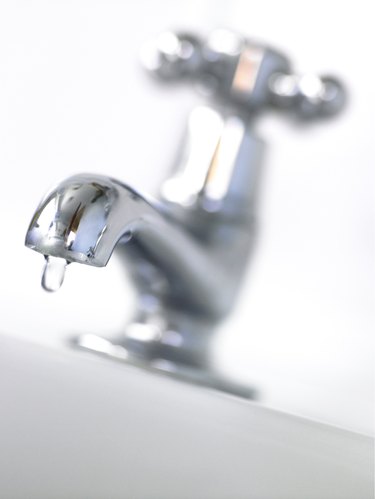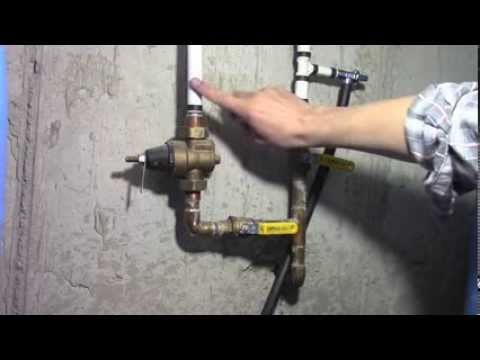Approaches to Resolve Low Water Pressure in Your Home
Approaches to Resolve Low Water Pressure in Your Home
Blog Article
What are your insights and beliefs about Low Water Pressure in the House??

Low tide stress in your house can be a frustrating issue, affecting every little thing from showering to washing dishes. If you're experiencing weak water flow, there are several feasible reasons and services to check out. In this overview, we'll review typical factors for low water stress and functional steps to deal with the concern properly.
Introduction to Low Tide Stress
Low water pressure happens when the circulation of water from your faucets, showers, and other fixtures is weak than common. This can make everyday jobs a lot more difficult and much less reliable. Understanding the sources of low tide stress is essential to discovering the best remedy.
Typical Root Causes Of Low Water Pressure
Pipeline Obstructions
In time, pipes can end up being obstructed with natural resource, debris, or particles, restricting the circulation of water. This is a typical problem in older homes with galvanized steel pipes.
Corrosion
Corrosion within pipelines can bring about leaks and lowered water pressure. Corrosion build-up can tighten water circulation, particularly in aging plumbing systems.
Faulty Pressure Regulators
Stress regulatory authorities are accountable for maintaining consistent water pressure in your home. If they malfunction, it can lead to low water stress or uneven circulation throughout your house.
Municipal Supply Of Water Issues
Sometimes, the problem exists outside your home. Community supply of water concerns, such as main line leakages or maintenance job, can temporarily reduce water pressure in your location.
Exactly How to Identify Low Tide Stress
Checking Taps and Fixtures
Begin by testing the water stress at different taps and fixtures throughout your home. If the issue is separated to details areas, it may show local issues.
Evaluating Pipelines
Examine visible pipes for indicators of leakages, rust, or blockages. Take note of any uncommon sounds, such as banging or rattling pipes, which might indicate problems within the plumbing system.
Consulting with a Plumber
If you're incapable to identify the cause of low tide pressure, take into consideration employing an expert plumber to carry out a detailed inspection. They can determine underlying concerns and recommend suitable options.
DIY Solutions to Deal With Low Tide Stress
Cleaning Up Aerators and Showerheads
Mineral deposits can gather in aerators and showerheads, decreasing water flow. Get rid of and clean up these elements regularly to enhance water stress.
Flushing Water Heater
Debris buildup in the water heater can limit circulation and lower effectiveness. Purging the storage tank occasionally assists get rid of debris and keep optimal performance.
Inspecting Pressure Regulator
Make sure that the pressure regulatory authority is functioning properly. Changing or changing the regulator can assist bring back correct water stress throughout your home.
Clearing Up Clogs in Pipeline
For small blockages, try utilizing a plumbing snake or chemical drainpipe cleaner to clear blockages in pipes. Beware when utilizing chemicals and follow security guidelines.
When to Call a Specialist Plumber
If DIY initiatives fail to solve the issue or if you presume significant plumbing problems, it's ideal to seek assistance from a qualified plumber. They have the expertise and tools to deal with complex problems securely and efficiently.
Preventive Measures to Preserve Water Pressure
Regular Maintenance
Set up regular maintenance for your plumbing system to stop concerns such as deterioration, leaks, and blockages. Resolving small problems early can aid prevent even more substantial repairs later.
Setting Up a Pressure Booster
Consider mounting a stress booster pump to improve water pressure in areas with continually reduced flow. This can be especially useful for multi-story homes or properties with high-demand components.
Surveillance Water Use
Be mindful of water use practices and stay clear of overtaxing the plumbing system. Simple adjustments, such as shocking showers and laundry loads, can help preserve appropriate water pressure.
Final thought
Dealing with low tide pressure can be frustrating, however determining the underlying reasons and executing suitable services can recover optimum circulation throughout your home. Whether it's cleaning aerators, examining pipelines, or seeking advice from a plumber, taking aggressive actions can guarantee a stable supply of water for your daily requirements.
FOUR WAYS TO FIX LOW WATER PRESSURE NOW
Turning on a shower or faucet only to find the water comes out in a sad, slow drizzle is never a good feeling. How exactly are you supposed to wash a pan or take a quick shower when it takes 10 minutes just to rinse off a little soap? The good news is that when your water pressure is bad, there's always a cause: typically one that can be easily fixed. Here are some of the most common causes of low pressure and what you can do to fix the issue:
DEBRIS AND MINERAL DEPOSIT BUILDUPS
If you notice low water pressure from just one or two of the fixtures in your house, the problem likely has to do with debris buildup. Water is full of minerals and other debris, all of which can accumulate in your pipes and on your fixtures. This can cause a blockage that affects how much water flows through. To fix this, try filling a small plastic bag with white vinegar, and use a rubber band to hang it around your showerhead or faucet. Let the head of the fixture soak for a few hours, and the vinegar should loosen the deposits.
WATER LEAKS
Leaks are another common cause of low water pressure. If water is flowing out of your plumbing through a hole or crack before it can reach your fixture, the pressure coming out of the faucet or showerhead will be lower. A plumbing professional is your best bet for finding and repairing a leak in your water supply pipes.
Leaks are another common cause of low water pressure. If water is flowing out of your plumbing through a hole or crack before it can reach your fixture, the pressure coming out of the faucet or showerhead will be lower. A plumbing professional is your best bet for finding and repairing a leak in your water supply pipes.
FOUR WAYS TO FIX LOW WATER PRESSURE NOW
Turning on a shower or faucet only to find the water comes out in a sad, slow drizzle is never a good feeling. How exactly are you supposed to wash a pan or take a quick shower when it takes 10 minutes just to rinse off a little soap? The good news is that when your water pressure is bad, there's always a cause: typically one that can be easily fixed. Here are some of the most common causes of low pressure and what you can do to fix the issue:
DEBRIS AND MINERAL DEPOSIT BUILDUPS
If you notice low water pressure from just one or two of the fixtures in your house, the problem likely has to do with debris buildup. Water is full of minerals and other debris, all of which can accumulate in your pipes and on your fixtures. This can cause a blockage that affects how much water flows through. To fix this, try filling a small plastic bag with white vinegar, and use a rubber band to hang it around your showerhead or faucet. Let the head of the fixture soak for a few hours, and the vinegar should loosen the deposits.
WATER LEAKS
Leaks are another common cause of low water pressure. If water is flowing out of your plumbing through a hole or crack before it can reach your fixture, the pressure coming out of the faucet or showerhead will be lower. A plumbing professional is your best bet for finding and repairing a leak in your water supply pipes.
Leaks are another common cause of low water pressure. If water is flowing out of your plumbing through a hole or crack before it can reach your fixture, the pressure coming out of the faucet or showerhead will be lower. A plumbing professional is your best bet for finding and repairing a leak in your water supply pipes.
A VALVE ISSUE
If you have low water pressure throughout your home, check your main shut-off valve to make sure it's completely open. You may also want to see if there's a pressure-reducing valve installed. If there is, have a plumber help you adjust the settings to get the pressure you're looking for.
OTHERS USING WATER
Believe it or not, your low water pressure could be caused by your neighbors. If you notice low pressure at certain times of day, it may be because you and the people living next to you have similar schedules - when everyone is showering at the same time, the pressure will be lower in every home. Low pressure throughout the neighborhood may also be caused by an issue with your municipal water supply. If that's the case, call the supplier to see if they're working on the issue.
https://www.rotorooter.com/blog/water-leaking/low-water-pressure-fixes/

As a devoted person who reads on 4 Ways to Troubleshoot Low Water Pressure, I imagined sharing that portion was a good thing. Enjoyed our piece of writing? Please quickly share it. Let another person find it. I praise you for being here. Kindly check our website back soon.
Call Today Report this page